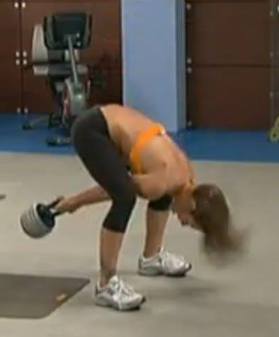The Biggest Problem With Kettlebell Swings
2016-11-21
It was probably one of the most transformational exercises for me. Not in what it did for my physique, but how it got me to look at functional fitness completely differently. It was kettlebell swings! Yes, back in 2002, after being pushed by a mentor to try this “crazy” kettlebell thing I dove in with my first big purchase. A 16 kg (35 pound) and 8 kg (18 pound) kettlebell came to my apartment with a VHS tape (yes, you know I am old now!).
This Russian guy was talking about the form of kettlebell swings, something I had never seen before. Looked easy enough, after all, I was familiar with exercises like Front Squats, Snatches, and Cleans from working at the university Strength & Conditioning facilities.
I grabbed that 16 kg kettlebell and I thought, “this is going to be a breeze!” As soon as I started to swing I quickly learned how wrong I was! It had been some time since I felt soooo uncoordinated with an exercise. I felt my feet shuffling around and like the weight was throwing me around more than I was moving the weight.
My lesson from my first experience with kettlebell swings wasn’t about my posterior chain, core, flexibility, or any of the very typical fitness issues. Rather, it was the realization that I had placed all my emphasis on training exercises that I really wasn’t teaching myself better movement.

I know this is the easiest thing to THINK is the problem with kettlebell swings, but it isn’t! Our mentality behind this exercise might be!
That is where my philosophy of functional training really started to shift. I thought that good exercises made good workouts/programs. I was wrong! The right intent, the lessons you learn through good exercises teach you how to move and perform better. This led me to understand the saying, “Weight room All-American—game day disappointment.” Obviously we all want our training to make us believe that it will make us better in and OUT of the gym!
If your goal is simply to lift heavier, do more, or “survive” the exercise you will NEVER get the benefits from it that we all talk so highly about. This is so true as it comes to something like the kettlebell swing.
You may, I know I DO! I see all the time people worrying about going to heavier kettlebells only to start losing the purpose and intent of the exercise. They have turned a movement based exercise into purely a lifting drill. The power, the grace, the coordination, gets lost to hail the all important need to “go heavy!”
So, what’s the answer? Go back to the movement! When we think about what the kettlebell swing teaches our body to do in the sense of movement, we realize that the movement should be transferred to many different forms. After all, it is great if we can be explosive and powerful when EVERYTHING is perfect, but we fall apart when we really need it most!
What am I talking about? The U.S Army popularized the idea of standards remain-conditions change. In training the standard should be the quality of our movement. The conditions come in many form? However, for most people when it comes to the kettlebell swing, it comes down to greater weight or more reps.
In almost 15 years of teaching kettlebells I can tell you the simple act of going to a single handed kettlebell swing changes the conditions greatly! All of a sudden, someone with two hands falls apart in their posture, power, and standards of the movement. If we don’t look at this as a serious discrepancy in our functional movement, we are missing the bigger picture.
That is why we see every exercise just a point in the continuum of movement. The kettlebell swing is no different. As you can see in this great video by DVRT Ultimate Sandbag Training Master, Paige Fleischmann, the IDEA of a kettlebell swing can be progressed to more sophisticated movements over time.

Why? Why do some of these other movements like single arm swings, Ultimate Sandbag Training Shoveling and MAX Lunges? Because you are teaching your body to be SMARTER not just trying to train it to work harder. Some of the strongest athletes I have worked with could dominate when you had them move up and down and then completely collapsed when you made them move with greater complexity!
As physical therapist and father of functional training, Gary Gray, has stated…
“Human function is three dimensional. We function within three planes of motion, or in all three dimensions simultaneously…All of our core functional activities require an integrated NMS system that reacts and moves in all three planes simultaneously. Walking forward obviously includes sagittal plane motion, but actually is dominated by transverse plane motion with significant frontal plane motion occurring concurrently. Successful standing and balancing requires three dimensional capabilities of the NMS system throughout the chain reaction. Because of how our joints are formed, how our muscles are attached and how our nerves are wired all core functional activities are three dimensional including components of all three planes at the same time.”
Strength training for real life means understanding how we perform in the most important sport….life!
Progression is key, but hopefully you are seeing that it can come in many forms like changing the plane of motion we train, or even the pattern we use to create the movement. If we go back and truly understand the qualities of the exercise that make it powerful, we should be able to elevate with using some of our DVRT concepts to make you move, feel, and perform your best!
Want to learn more how we combine DVRT and kettlebells? Don’t miss saving 25% on our combo programs HERE with coupon code “summersale” and enjoy challenges like this DVRT and kettlebell workout!
© 2025 Ultimate Sandbag Training. Site by Jennifer Web Design.







